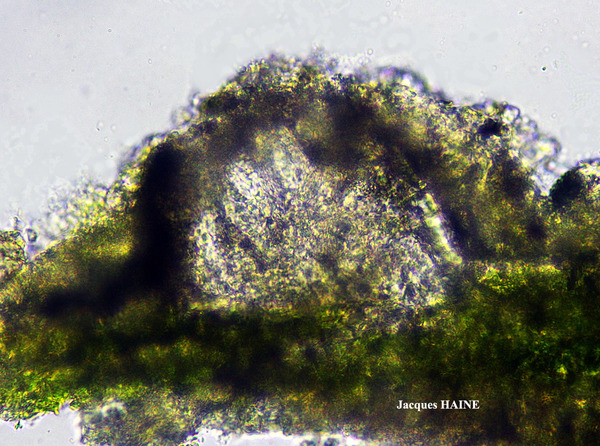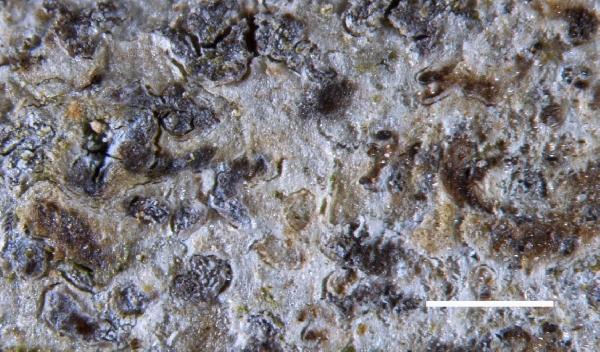Reichlingia anombrophila (Coppins & P.James) Frisch
in Frisch & al., Graphis Scripta, 32, 1: 15, 2020.. Basionym: Arthonia anombrophila Coppins & P. James - in Coppins, Lichenologist, 21: 196, 1989.
Synonyms:
Distribution: C - Abr (Nimis & Tretiach 1999).
Description: Thallus crustose, endosubstratic or thinly episubstratic, up to 75 μm thick, white to pale grey, matt, continuous to slightly rimose, usually forming small patches, effuse or delimited by a brown prothalline line. Apothecia arthonioid, usually crowded, in section 45-100 μm tall, red-brown, but often thinly white-pruinose, irregularly rounded and 0.15-0.3(-0.4) mm across or elongate-substellate and 0.2-1 x 0.05–0.2 mm, without a distinct proper margin. Proper exciple poorly developed, dark brown; epithecium pale to dark red-brown, K+ pale green; hymenium colourless or pale red-brown in upper part, 35-55 μm high, hemiamyloid; paraphysoids branched and anastomosing, c. 1 μm thick, the apical cells brown-walled, up to 2.5 μm wide, a few with a brown cap; hypothecium colourless to pale yellow-brown, 25-35 μm high. Asci 8-spored, clavate, semi-fissitunicate, with a large apical dome and a distinct ocular chamber, without K/I+ tholus structures. Ascospores (1-)3-septate, the apical cell enlarged, hyaline but turning brown and finely warted when overmature, obovoid, 12-14(-16) x 4-5(-6) μm. Pycnidia usually scarce, immersed, 40-80 μm across, the wall red-brown, K+ pale green. Conidia bacilliform, 3-5 x 0.7-1 μm. Photobiont trentepohlioid. Spot tests: thallus K-, C-, KC-, P-, UV-. Chemistry: thallus with 2'-O-methylperlatolic acid.Note: on dry, usually rough bark near the bases of trunks of ancient oaks, more rarely on smooth bark, in long-established woodlands and parklands, certainly very rare in Italy.
Growth form: Crustose
Substrata: bark
Photobiont: Trentepohlia
Reproductive strategy: mainly sexual
In underhangs rarely wetted by rain
Commonnes-rarity: (info)
Alpine belt: absent
Subalpine belt: absent
Oromediterranean belt: absent
Montane belt: absent
Submediterranean belt: very rare
Padanian area: absent
Humid submediterranean belt: absent
Humid mediterranean belt: absent
Dry mediterranean belt: absent

Predictive model
Herbarium samples
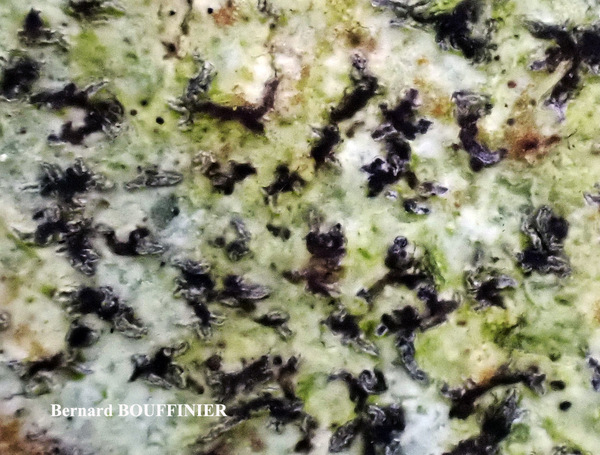
Berbard Bouffinier - Source: http://www.lichensmaritimes.org/index.php?task=fiche&lichen=1174&lang=en
France, Finistère, Argol
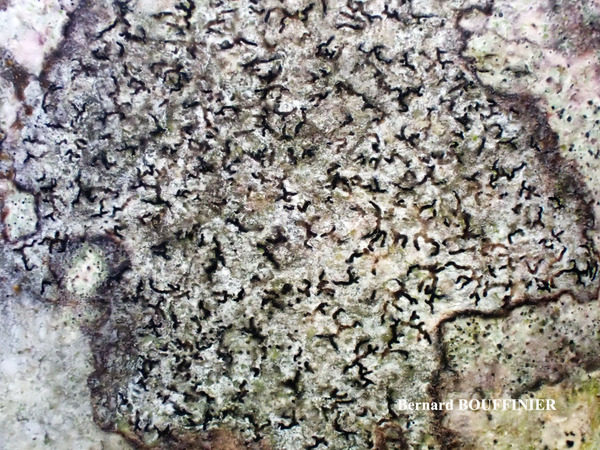
Berbard Bouffinier - Source: http://www.lichensmaritimes.org/index.php?task=fiche&lichen=1174&lang=en
France, Finistère, Argol

Berbard Bouffinier - Source: http://www.lichensmaritimes.org/index.php?task=fiche&lichen=1174&lang=en
France, Finistère, Argol
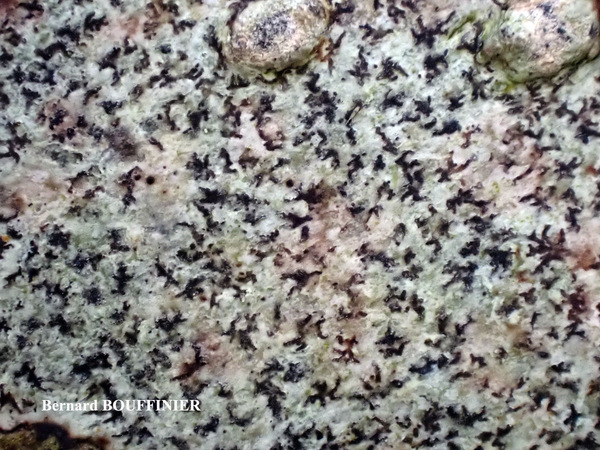
Berbard Bouffinier - Source: http://www.lichensmaritimes.org/index.php?task=fiche&lichen=1174&lang=en
France, Finistère, Argol
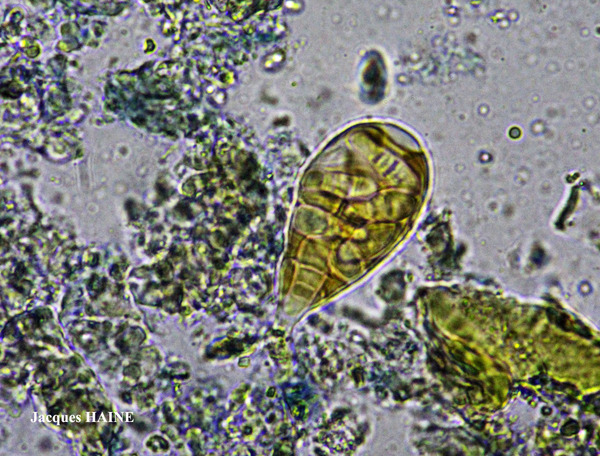
Jacques Haine - Source: http://www.lichensmaritimes.org/index.php?task=fiche&lichen=1174&lang=en
France, Finistère, Argol
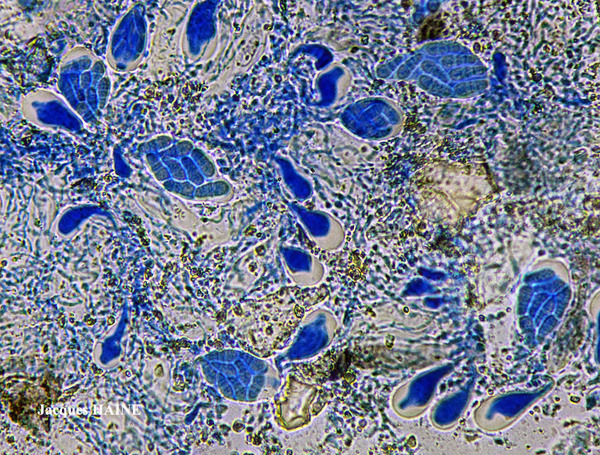
Jacques Haine - Source: http://www.lichensmaritimes.org/index.php?task=fiche&lichen=1174&lang=en
France, Finistère, Argol
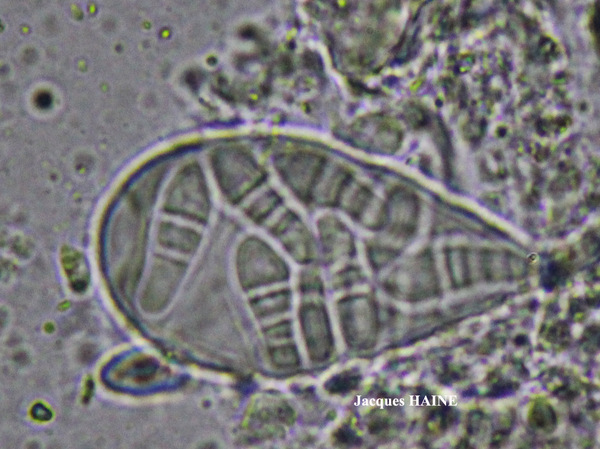
Jacques Haine - Source: http://www.lichensmaritimes.org/index.php?task=fiche&lichen=1174&lang=en
France, Finistère, Argol
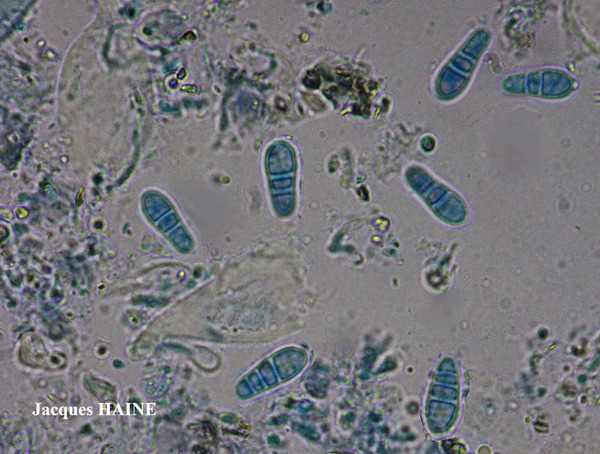
Jacques Haine - Source: http://www.lichensmaritimes.org/index.php?task=fiche&lichen=1174&lang=en
France, Finistère, Argol
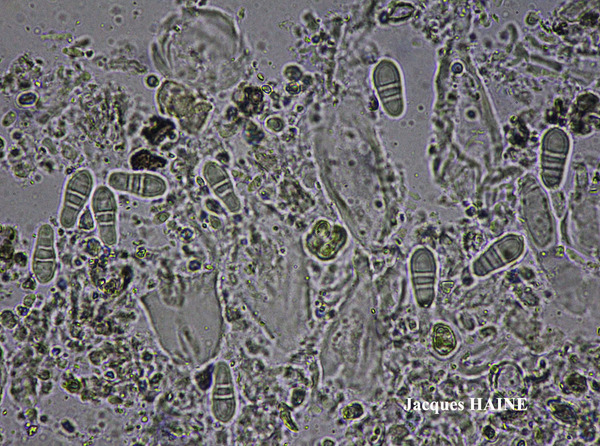
Jacques Haine - Source: http://www.lichensmaritimes.org/index.php?task=fiche&lichen=1174&lang=en
France, Finistère, Argol
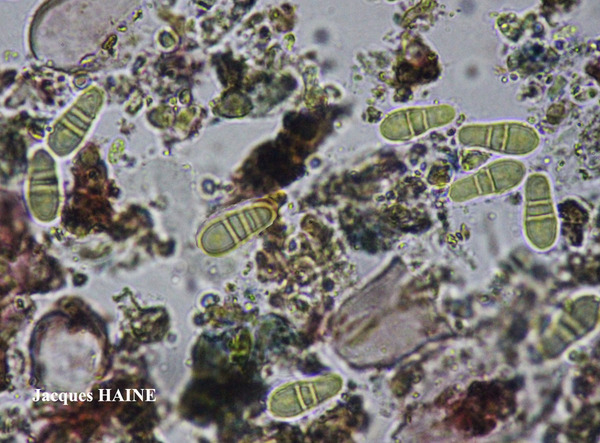
Jacques Haine - Source: http://www.lichensmaritimes.org/index.php?task=fiche&lichen=1174&lang=en
France, Finistère, Argol
Growth form: Crustose
Substrata: bark
Photobiont: Trentepohlia
Reproductive strategy: mainly sexual
In underhangs rarely wetted by rain
Commonnes-rarity: (info)
Alpine belt: absent
Subalpine belt: absent
Oromediterranean belt: absent
Montane belt: absent
Submediterranean belt: very rare
Padanian area: absent
Humid submediterranean belt: absent
Humid mediterranean belt: absent
Dry mediterranean belt: absent

Predictive model
| Herbarium samples |

Berbard Bouffinier - Source: http://www.lichensmaritimes.org/index.php?task=fiche&lichen=1174&lang=en
France, Finistère, Argol

Berbard Bouffinier - Source: http://www.lichensmaritimes.org/index.php?task=fiche&lichen=1174&lang=en
France, Finistère, Argol

Berbard Bouffinier - Source: http://www.lichensmaritimes.org/index.php?task=fiche&lichen=1174&lang=en
France, Finistère, Argol

Berbard Bouffinier - Source: http://www.lichensmaritimes.org/index.php?task=fiche&lichen=1174&lang=en
France, Finistère, Argol

Jacques Haine - Source: http://www.lichensmaritimes.org/index.php?task=fiche&lichen=1174&lang=en
France, Finistère, Argol

Jacques Haine - Source: http://www.lichensmaritimes.org/index.php?task=fiche&lichen=1174&lang=en
France, Finistère, Argol

Jacques Haine - Source: http://www.lichensmaritimes.org/index.php?task=fiche&lichen=1174&lang=en
France, Finistère, Argol

Jacques Haine - Source: http://www.lichensmaritimes.org/index.php?task=fiche&lichen=1174&lang=en
France, Finistère, Argol

Jacques Haine - Source: http://www.lichensmaritimes.org/index.php?task=fiche&lichen=1174&lang=en
France, Finistère, Argol

 INDEX FUNGORUM
INDEX FUNGORUM
 GBIF
GBIF
